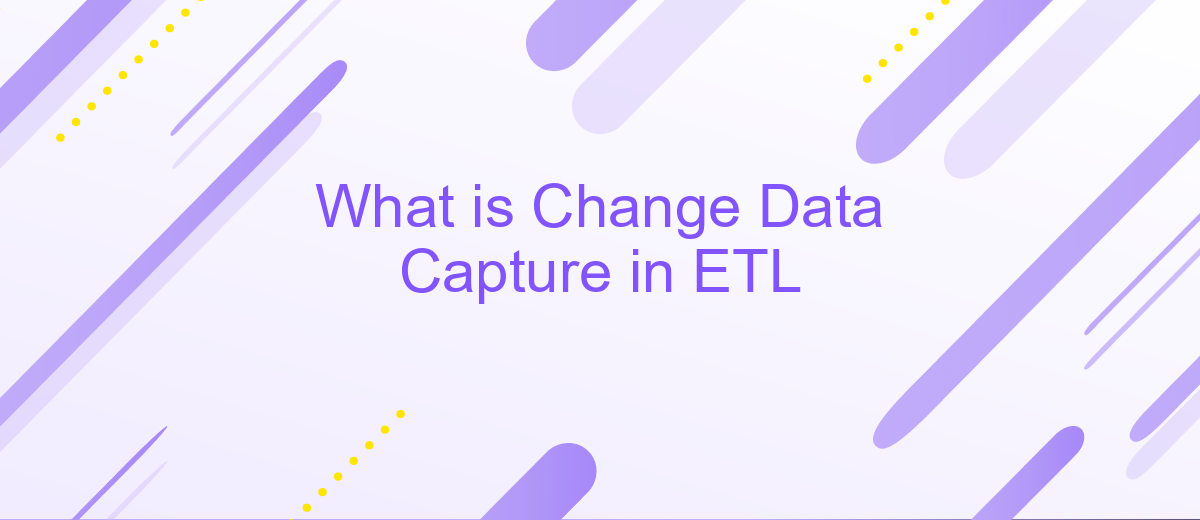What is Change Data Capture in ETL
Change Data Capture (CDC) is a crucial technique in Extract, Transform, Load (ETL) processes that focuses on identifying and capturing changes made to data in a database. By efficiently tracking modifications, CDC ensures that only updated information is processed, enhancing data accuracy and reducing resource consumption. This article delves into the principles of CDC, its importance, and how it optimizes ETL workflows.
Introduction
Change Data Capture (CDC) is a crucial process in ETL (Extract, Transform, Load) operations, enabling real-time data integration and synchronization. By identifying and capturing changes made to data in a database, CDC ensures that data warehousing and analytics systems are always up-to-date with the latest information.
- Improves data accuracy and consistency
- Reduces latency in data processing
- Enhances performance by minimizing data load
- Supports real-time analytics and reporting
Integrating CDC into your ETL workflows can be streamlined with tools like ApiX-Drive, which automates the data capture and transfer processes. ApiX-Drive offers a user-friendly interface and robust features that simplify the setup and management of data integrations, ensuring seamless data flow across various systems and applications.
How CDC Works

Change Data Capture (CDC) operates by continuously monitoring and capturing changes made to a database in real-time. This process involves identifying and tracking inserts, updates, and deletes, ensuring that any modifications to the data are promptly detected. CDC utilizes transaction logs or triggers to capture these changes, which are then propagated to the data warehouse or other target systems. This allows businesses to maintain an up-to-date and accurate reflection of their data across various platforms.
To streamline the integration of CDC into your ETL processes, tools like ApiX-Drive can be invaluable. ApiX-Drive offers a user-friendly interface to set up and manage CDC integrations without extensive coding knowledge. By leveraging such services, organizations can automate the data capture process, reduce manual intervention, and enhance data consistency across their systems. This not only improves operational efficiency but also ensures that decision-making is based on the most current data available.
Benefits of Using CDC in ETL

Change Data Capture (CDC) is a crucial component in ETL processes, offering numerous benefits for data management and analysis. By capturing and tracking changes in real-time, CDC ensures that data is always up-to-date, enabling more accurate and timely decision-making.
- Improved Data Accuracy: CDC minimizes the risk of data discrepancies by ensuring that only the latest changes are reflected in the data warehouse.
- Enhanced Performance: By only processing changed data, CDC significantly reduces the load on ETL processes, leading to faster data integration and reduced resource consumption.
- Real-Time Data Availability: CDC enables real-time data updates, making it possible to access the most current data without delay.
- Cost Efficiency: By optimizing ETL processes and reducing the need for full data loads, CDC helps lower operational costs.
- Seamless Integration: Tools like ApiX-Drive facilitate easy CDC implementation, allowing businesses to integrate various data sources effortlessly.
Incorporating CDC into ETL processes not only enhances data integrity but also improves operational efficiency. Leveraging services like ApiX-Drive can further streamline the integration process, making it easier for organizations to maintain real-time data synchronization across multiple platforms.
Challenges of Using CDC in ETL

Implementing Change Data Capture (CDC) in ETL processes can present several challenges. One of the primary issues is the complexity involved in setting up and maintaining CDC mechanisms. This often requires specialized knowledge and tools, making it difficult for organizations without dedicated IT resources.
Another challenge is ensuring data consistency and integrity. As CDC captures and processes data changes in real-time, there is a risk of missing or duplicating data if the system is not properly configured. This can lead to inaccurate analytics and reporting, which can negatively impact business decisions.
- High initial setup costs and complexity
- Ensuring data consistency and integrity
- Performance overhead on source systems
- Handling schema changes and data transformations
To mitigate these challenges, organizations can leverage integration services like ApiX-Drive, which simplify the process of connecting various data sources and automating data workflows. By using such tools, businesses can reduce the technical burden and focus on deriving actionable insights from their data.


Best Practices for Implementing CDC in ETL
Implementing Change Data Capture (CDC) in ETL processes requires careful planning and execution to ensure data integrity and system performance. One best practice is to choose the right CDC method that suits your system's needs, such as log-based, trigger-based, or timestamp-based CDC. Each method has its own advantages and trade-offs, so it's crucial to evaluate them based on factors like database load, latency, and complexity. Additionally, ensure that your CDC solution is scalable to handle increasing data volumes without degrading performance.
Another critical best practice is to leverage automation tools to streamline the CDC implementation. Tools like ApiX-Drive can simplify the integration process, allowing you to set up and manage data flows with minimal manual intervention. This not only reduces the risk of human error but also ensures that your ETL processes are consistent and reliable. Regularly monitor and test your CDC implementation to catch any issues early and make necessary adjustments. Keeping your system documentation up-to-date is also essential for maintaining a robust CDC strategy.
FAQ
What is Change Data Capture (CDC) in ETL?
Why is CDC important in ETL processes?
How does CDC work in ETL?
What are the benefits of using CDC in ETL?
How can I implement CDC in my ETL processes?
Time is the most valuable resource in today's business realities. By eliminating the routine from work processes, you will get more opportunities to implement the most daring plans and ideas. Choose – you can continue to waste time, money and nerves on inefficient solutions, or you can use ApiX-Drive, automating work processes and achieving results with minimal investment of money, effort and human resources.

